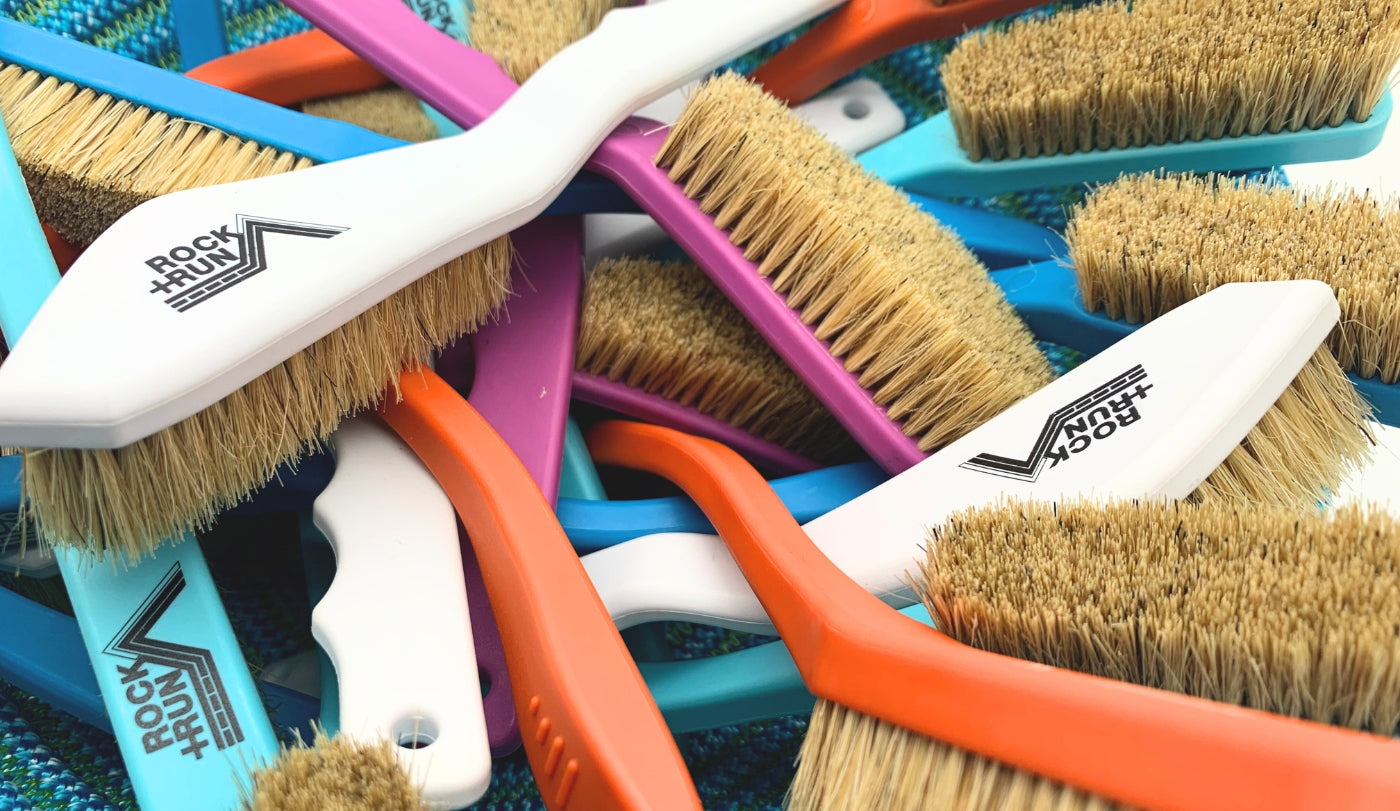By Morgan Cvetkovic-Jones
We do it every day, even if you aren’t a climber, you do it too. That laborious, twice daily (hopefully!), two-minute task – brushing your teeth. So, we all know how a brush works, but are you really suggesting that your little pegs of enamel look as good as a pristinely clean limestone rail or a brand-new set of gaudily coloured plastic? No, I didn’t think so, so here’s an introduction to all things brushing, the what’s, the why’s and every bristle in-between.
Why should we brush holds?
First thing’s first, why. Put simply, we brush climbing holds for exactly the same reason we brush our teeth, to look after them and keep them in top condition in the hope that they’ll still be around if we make it to 80. It’s particularly important if we’re climbing outside, there’s nothing worse than turning up to your project only to find it looking like someone has been overly enthusiastic with the icing sugar - leaving limestone prematurely polished and sedimentary rock types like sandstone and gritstone plastered smooth. Although plastic holds are ultimately cleaned by the climbing wall/gym owner, it’s still the done thing to give holds a brush, especially if you’re repeatedly trying a particular problem.
Crucially though, it’s friction that should push us to brush the most. When you’re climbing at your limit, indoors or out, friction can make all the difference. Brushing your holds won’t only keep them clean but it’ll maximise the amount of purchase you can get on every little flake or edge. It might be the difference between taking the send or going home empty handed.

Can I use my toothbrush?
Yes, the common man’s brush will do the job. The toothbrush was a pioneer, the original hold brushing weapon, which inspired many of the more refined options we see on the market today. But really, would you opt for a dustpan and brush over Dyson’s latest suction marvel? Like much of our climbing kit, times have changed, and our brushes have evolved with them.
So, what should you look for? There aren’t many bad options out there but a few things to prioritise are:
- The right brush for the right surface: there’s no use trying to brush a huge volume with a kids toothbrush or a ratty crimp with your mum’s best broom. Choose a brush that’s size matches the type of holds you commonly pull on.
- A sturdy neck- the point between handle and brush head: this is the part of the brush that will take the most stress when you’re really giving it some brushing beans. Go for a brush with a sturdy or reinforced neck, particularly if you’re heavy handed.
- Bristle type: boar’s hair has to be the pick for the ideal combination of rigidity, durability and outright cleaning performance.
- Vegan? If so the premium Nylon bristled brushes from Sublime and Black Diamond offer a performance level close to that of boars hair.
Recommendations
Crimps and Cracks
The original Lapis Brush is an awesome crimp/small crack cleaning brush, with its long narrow head of dense bristles being bolstered by an internally (wire) reinforced neck.
Slopers and Small Volumes
We’d recommend the Moon Voyager Brush for cleaning medium to large surface areas - grit slopers, larger bolt-on holds, small volumes etc. If you are looking for a totally different weapon to add to your arsenal, then we would highly recommend the Mammut Sloper Brush for all those cleaning scenarios where a normal brush just won't cut the mustard.
Ramps & Larger Volumes
The Rock+Run Shaped Boars Hair Brush or YY Vertical Infinity Brush - Large are the business for huge slopes, ramps or indoor volumes.

All-rounder
If you want one brush to cover all your bases, the Rock + Run Boars Hair Brush does a great job on most holds and lasts longer than other brushes we sell. However, if you want a more sustainable (non plastic) option, the EB Cherry Wood Brush is just as good if a bit more expensive.
Wire Not?
One thing to remember: never brush sedimentary rock types - limestone, gritstone, sandstone - with a wire brush. Even with harder volcanic rock types a wire brush should be reserved for the development of new lines and even then used with discretion.
Happy brushing one and all.















